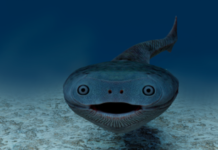Tim Host was just a humble counselor at Jesuit College Preparatory School of Dallas with a love of Pez. He was a beloved, integral part of admissions as he helped freshmen acclimate to life at Jesuit. He was…until he was murdered in cold blood.

Crack teams of forensics agents were tasked with bringing any liable parties to justice. The investigators, seniors in Mrs. Stefanie Boyle’s Forensics class, worked in groups to solve the “murder,” utilizing skills that they had learned over the course of the year.
Alex Motter ’16 was one on one of those teams. “We figured out who it was, we established a motive, and we came up with a chain of events that led to his death,” he explained. In order to do so, the groups divided up tasks. Mrs. Boyle said, “They each have roles. There might be a lead investigator that has to take command of the group…[or] someone that takes pictures and documentation of evidence.”
But who was the dastardly perpetrator that the seniors had to bring to justice? It was none other than sophomore counselor David Williams, who recalled that Mr. Host “was in the hole for a lot of money” due to a gambling problem. So, Mr. Williams poisoned him with strychnine, a common rat poison.
Mr. Williams said that after Mr. Host realized he had ingested rodenticide, “He scratched me on the…wrist.” After the murder, Mr. Williams wrapped a bandage on his wrist every day to imitate the injury.
He also admitted that playing a major part in this project was somewhat difficult. “It was a little nerve-racking… Having to be dishonest was tough for me,” he explained. “The best groups were the ones who kept asking me questions and looked for holes in my story.”
Mrs. Boyle was appreciative of all the faculty’s participation. “I couldn’t do the project without their help,” she said. As for Mr. William’s dishonesty, she commented that “he’s pretty good with keeping his poise.”
Yet, not only the faculty but also some students played roles in bringing the project to fruition. As they had completed projects themselves on molecules earlier in the semester, sophomores were enlisted as experts on the same chemical compounds they had researched for their project. The senior investigators interviewed the sophomores that knew about compounds relating to the murder, like Strychnine.
Because the seniors started the investigation without much information, it was hard to find the killer. Motter said that “it was almost like a game of Clue, except there were no obvious hints. Everything that you had to figure out was from actual lab testing.”
Giving an example of the lab processes that they utilized, he said, “We performed comparative electrophoresis on DNA samples… It’s a pretty stressful process.” With DNA evidence, they could pin it on Mr. Williams.
Yet, despite the difficulties that the teams encountered, most would agree with Motter when he concluded, “[The work] paid off in the end, and it was a fun way to end the year.” Who knows what next year’s class will have to solve?






